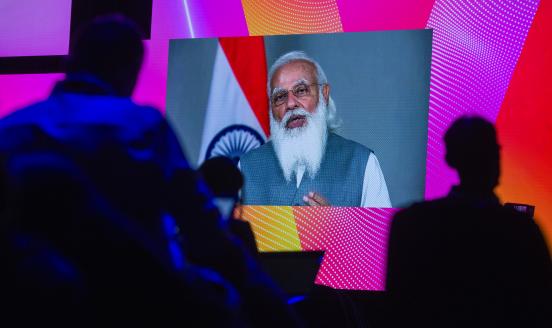Engagement in a time of turbulence
The arrival of China as an increasingly significant setter of global standards may be uncomfortable for India but is near-inevitable and needs to be p
About six weeks ago India curtly and publicly declined to attend Chinese President Xi’s Belt and Road Forum in Beijing. India’s snub of Beijing was both uncharacteristic and controversial, although not unexpected. Since then, Prime Minister Modi and his senior officials have been engaged in a hectic circuit of visits and diplomacy, with a diverse set of partners and interlocutors. These have included the African Development Bank’s Annual Meetings in Gandhinagar; the meeting of the Shanghai Cooperation Organisation in Astana; a round of country visits to Russia, Spain, France and Germany; and most recently to the US, Portugal and The Netherlands.
When the Prime Minister is involved, defence and security issues dominate. But as an economist, I believe that India stands to benefit from deeper engagement with the global economy even in these uncertain times; and that India is now sufficiently influential to help shape the emerging world order should it choose to do so.
I was present at the Belt and Road Forum (BRF) in Beijing, when India issued its statement on why it was refusing to participate in the China-led summit. There seemed to be a wide gap between the concept of the Belt and Road Initiative and as understood by the Ministry of Economic Affairs (MEA). Confusingly, the “Belt” refers to east-west land connectivity between the Pacific and the Atlantic via central Asia and Europe, while the “Road” refers to the maritime arc that connects the land spokes.
India’s proximate concerns seem to be with a particular spoke, the China-Pakistan Economic Corridor (CPEC) and various points on the arc, notably Gwadar in Pakistan, as well as Hambantota and Colombo ports in Sri Lanka. There is no question that the BRI is diffuse, amorphous and Sino-centric in both conception and orientation. Yet the Belt component is already providing land connectivity to a large, resource- rich swath of Central Asia which is as much in India’s hinterland as that of Russia and Turkey and Presidents Putin and Erdogan both chose to attend.
It is also somewhat condescending to argue, as India did, that European Union members such as Hungary (a country on the Belt transit route) could easily be caught in a debt trap, although it is true that the EU has expressed concerns on the need for consistency of BRI projects with established financing and procurement protocols of EU member states.
China’s presentation of the BRI’s goals is much wider than just physical and digital connectivity and it is these additional dimensions that raise more important challenges (and opportunities) for Indian diplomacy. As articulated by President Xi in his speech at Davos in January, China sees itself as flag-bearer for continued integration of the global economy at a time when support from richer countries is waning.
Less clear is the relationship of this Globalization 2.0 with the existing institutions of global governance, whether treaty-based (United Nations, World Trade Organisation, International Monetary Fund, the World Bank and the regional development banks) or more informal organisations such as the G-20. Frustration at the slow pace of reform of the established institutions was an important motivation for China’s leadership in creating the Asian Infrastructure Investment Bank (AIIB) and for the BRICS nations jointly sponsoring the New Development Bank headquartered in Shanghai under an Indian chief executive.
As articulated by successive governments, India’s foreign policy has consistently sought to create an external environment that supports its economic and social transformation. Since India’s historic, if belated, decision in 1991 to seek deeper integration with the world economy, such conditions have included an open trade and financial order whose rules were typically set by the richer countries, essentially the G-7 and acceded to by India, perhaps with some grumbling along the way.
The arrival of China as an increasingly significant setter of global standards may be uncomfortable for India but is near-inevitable and needs to be planned for. This brings me back to the Prime Minister of India's recent diplomatic activities, particularly the attention paid to a wide variety of European capitals in recent weeks.
While the timing may have been fortuitous, the Prime Minister’s visit came soon after an unsatisfactory G-7 summit in Italy and visible stress in the relationship between the US President and the German Chancellor. The extraordinary success of President Macron in elections to the National Assembly bodes well for a return to French-German leadership in Europe at a time when the economy in the eurozone is doing better than in a while.
This is not to deny the significant differences that continue to exist between India, the EU at the Commission level and with individual capitals on a broad range of economic and social issues. It is rather to urge Indian policy planners in two directions. The first is to engage more actively on issues of global governance than they have typically done, as being a ‘free rider’ may be less comfortable for India than in it has been in the past.
The second is to import a phrase from European diplomacy: variable geometry. India's diplomatic efforts have created goodwill with a broad spectrum of partners, notably the US, Japan, France and Germany. As demonstrated at the SCO summit, India also maintains a working relationship with China despite many serious differences. It will take fancy footwork to develop coalitions on the issues that matter to India.
As India found in 1991, a time of global turbulence could also be a time of opportunity.





